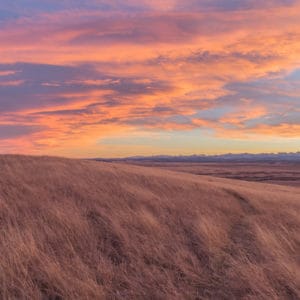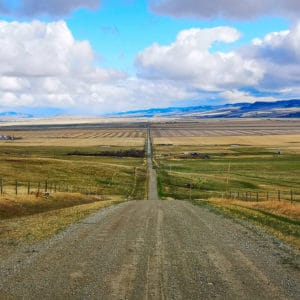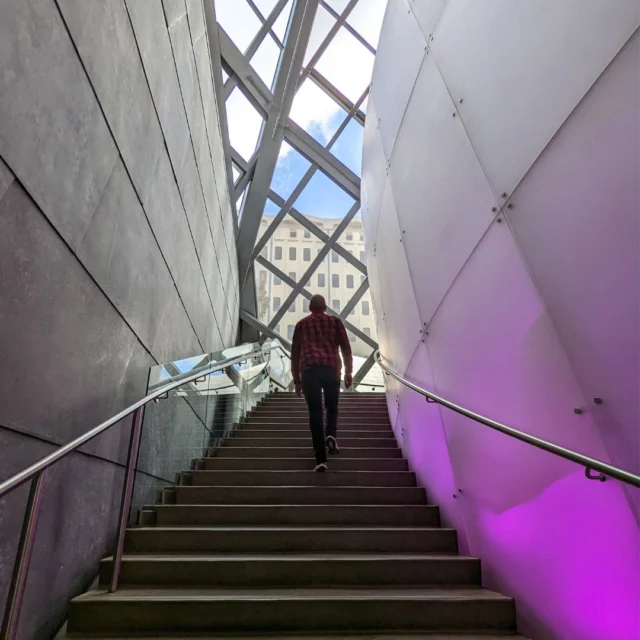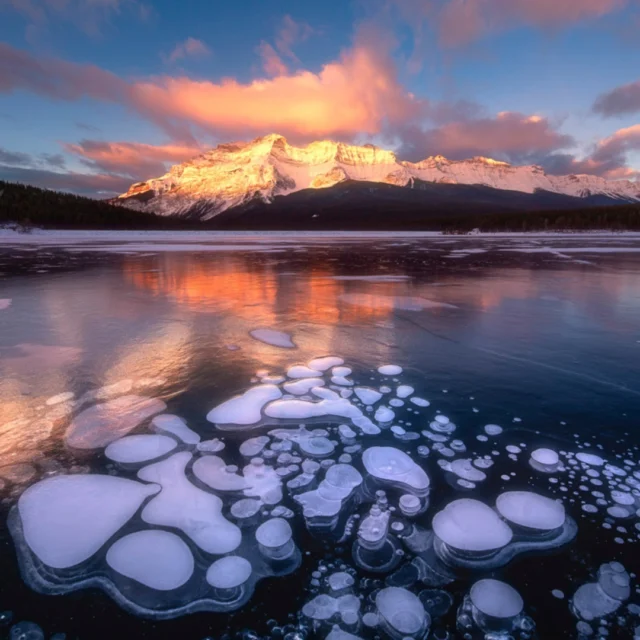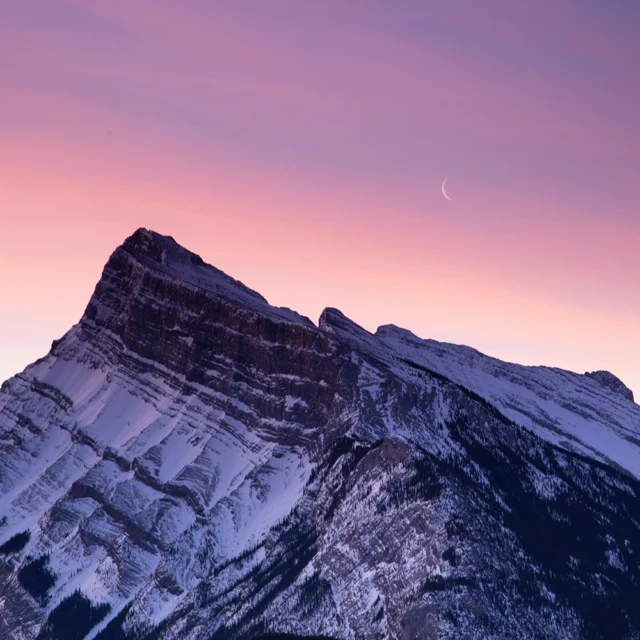Disclaimer: This page may contain affiliate links. Please review our full Terms and Conditions for more information and our Privacy Policy. Note that any pricing, operating hours, or other such information provided below may have changed since initial publication.
Compiled by the Road Trip Alberta team
Last updated on January 13, 2025
Designated a UNESCO World Heritage Site in 1981, Head-Smashed-In Buffalo Jump pays homage to the Indigenous peoples of the North American Plains. Full of significance, the site is also commemorated by the Government of Canada as a National and Provincial Historic Site.
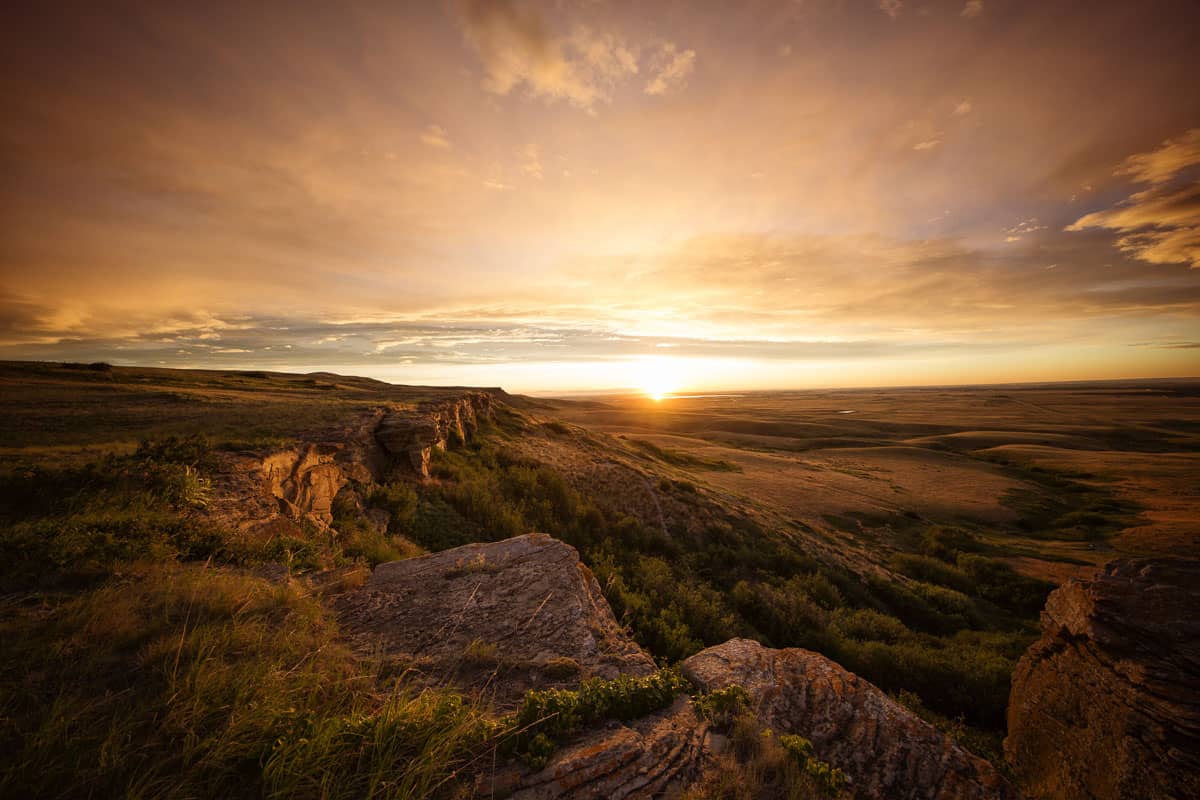
Sitting atop a prairie hill, the interpretive centre at Head-Smashed-In Buffalo Jump overlooks the spot where the primary food source and way of life were herded toward the edge and fell to their death. The demise of the bison provided sustenance and contributed to all facets of the Plains people’s way of being. Bison were how they clothed themselves, sustained themselves throughout brutal winters, and provided shelter from the harsh prairie elements.
Showcasing extreme skill and knowledge of bison herd instincts, the Plains people used the location at Head-Smashed-In Buffalo Jump for over 6,000 years as depicted by extensive archaeological evidence. In fact, the evidence of human activities and hunting practices found at this site is some of the most developed in North America.
Head-Smashed-In Buffalo Jump is unlike any other attraction in Alberta, providing visitors with a glimpse into the past and into the culture and traditions of the native people of the Plains.
Land Acknowledgement
We acknowledge that Head-Smashed-In Buffalo Jump is located on the traditional land of the Blackfoot People. We honour and respect the way of life of the people who have walked this land for centuries.
How to get to Head-Smashed-In Buffalo Jump
From Calgary
The drive from Calgary to Head-Smashed-In Buffalo Jump is 183 km, which takes approximately one hour and 50 minutes. If leaving from the city, take AB-2 / Deerfoot south, following the signs for Fort Macleod and Lethbridge. Follow AB-2 south for an hour and a half until reaching AB-785 W, and turn right at the marker for Head-Smashed-In Buffalo Jump. Follow AB-785 W until you see the large entrance sign for Head-Smashed-In Buffalo Jump, which will be on the right-hand side.

From Lethbridge
At only 70 km away, Lethbridge is the closest big city to Head-Smashed-In Buffalo Jump. To get to Head-Smashed-In Buffalo Jump from Lethbridge, head west out of the city on AB-3. Follow the highway through the town of Fort Macleod. Right after leaving the town, merge onto AB-3 W and use any lane to turn right onto Crowsnest Hwy/AB-2 N/AB-3 W (with signs for Fort Macleod/Pincher Creek/Calgary).
Use the right lane to take the AB-2 N ramp to Calgary and continue onto AB-2 N until reaching signs for Head-Smashed-In Buffalo Jump and AB-785 W. Turn left off the highway onto AB-785 W and follow the road for 16 km until reaching the large Head-Smashed-In Buffalo Jump sign on the right-hand side.
History and Archaeological Significance
Prior to colonization, the Blackfoot bands were nomadic. The structure of their movements was marked by three main factors: the location of the bison herds, the weather, and the season. Taking in those factors, they moved the location of their camp accordingly.
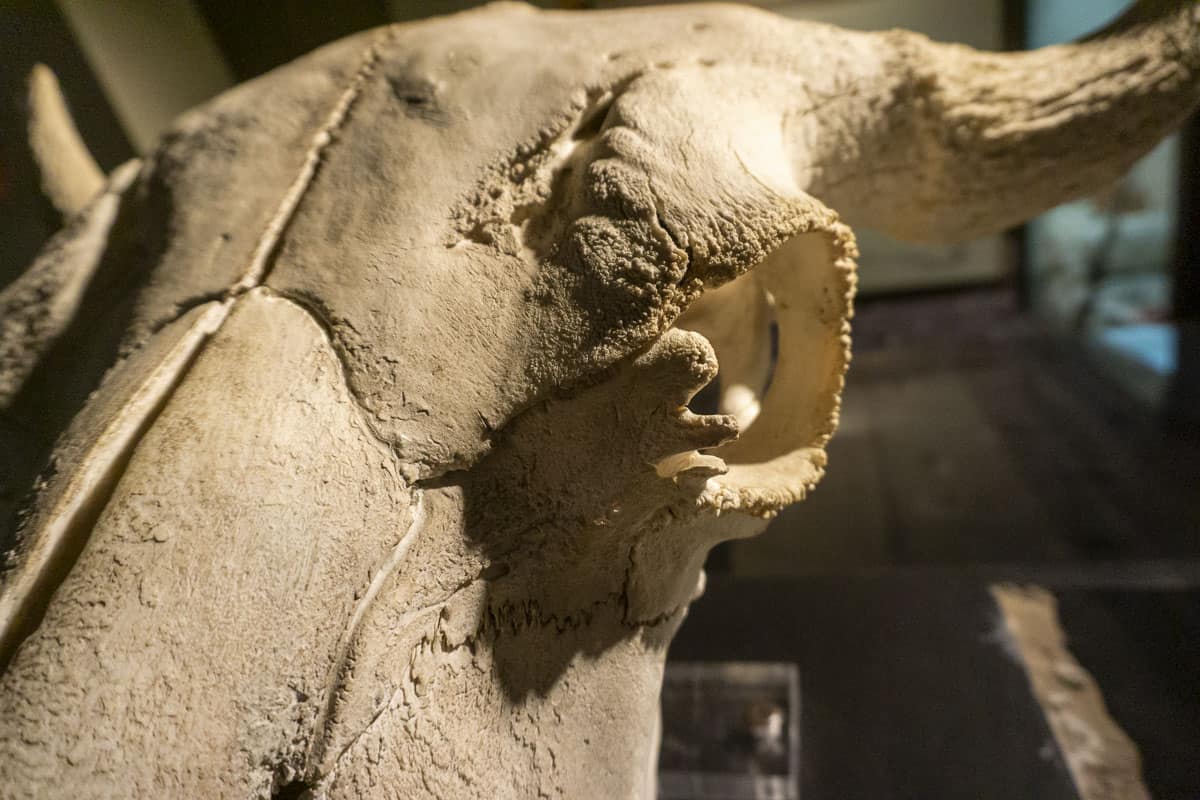
Although buffalo jumps can be found in multiple locations in the Northern Plains, the jump at Head-Smashed-In is the best-preserved and was the most extensively used for the longest period. Utilizing their knowledge of bison behaviour and herd patterns, the Plains people created an ingenious way to supply a large amount of food to the camps over the winter.
Buffalo runners dressed as wolves would sneak up on the vast herds of bison and play on their protective instincts of the babies, causing a stampede that was orchestrated by narrow drive lanes leading to an edge. When the bison got to the end of the drive lanes and realized that there was a deadly drop, the frenzy was too intense to stop the forward momentum; causing the herd to fall to their death. The kill site, or where the bison landed after their fall off the sandstone cliffs, is rife with archaeological resources suggesting that people camped nearby. Furthermore, the stone tools and evidence of teepee rings helped to determine that all parts of the fallen bison were utilized in some way.
Archaeological evidence at the base of the jump shows that the Indigenous people utilized the bison remains for clothing, tools, food, and shelter. Bison were more than just a food source for the Plains people; this majestic animal was an integral part of their culture.
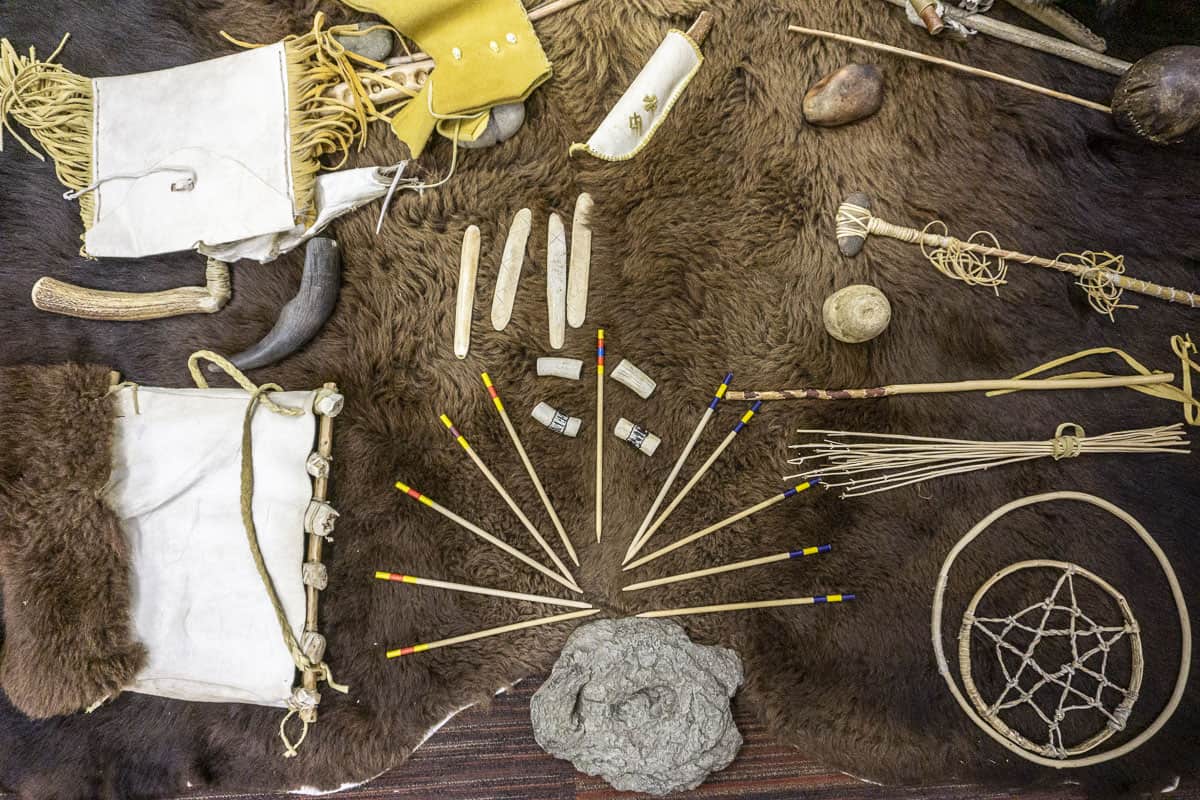
With the settlement of Europeans in the area in the late 19th century and the arrival of the North West Mounted Police, who began patrolling the region in 1874, bison became the main target of the settlers. Drawn in by the seemingly endless herds of them roaming the prairies, bison became not only a food source but targeted for their hides and often used as target practice for those with guns. Alas, the supply was not endless, and the buffalo hit near extinction in a very short amount of time.
In 1881, when the buffalo were few and far between, the Blackfoot people pursued their traditional lifeways for as long as possible. With the substantial loss of their main food supply, and with the persuading by North West Mounted Police patrols to adapt to a more civilized way of being, they were obliged to adapt to a new era.
Things To Do at the Head-Smashed-In Buffalo Jump Historical Site
To complete the full experience at Head-Smashed-In, allow for at least 2 hours to have adequate time at the Visitor Centre galleries and walk to the Cliff Top Viewpoint. Allocate additional time if you are planning on doing any hiking in the surrounding area.
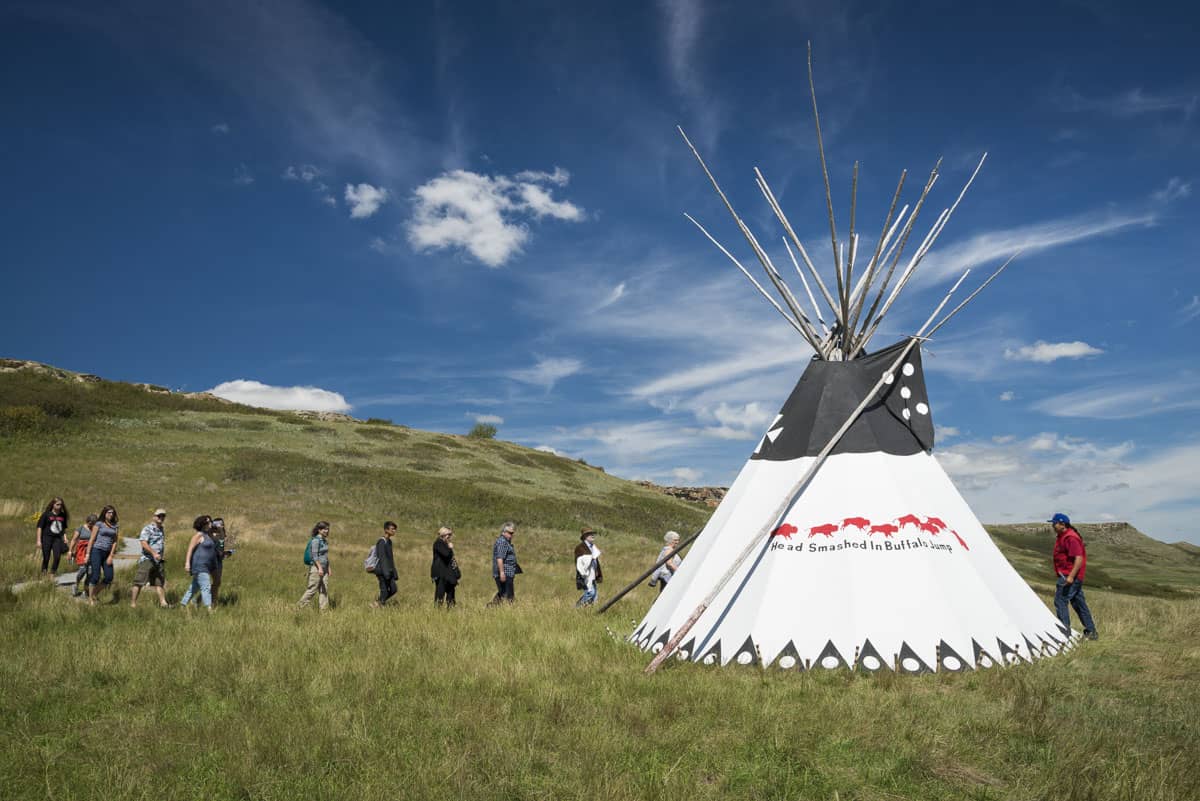
Visitor Information Centre
With seven layered stories, the visitor information centre at Head-Smashed-In Buffalo Jump World Heritage Site is world-class and full of interpretive displays and interactive exhibits. Weaving the cultural significance of the site with archaeological discoveries and historical data, the information provides a multi-faceted approach to understanding how a deep knowledge of the land and bison behaviour allowed the people to flourish for centuries. As we learn, bison represented more to the Native people of the Plains than just a food source. They were an integral part of their way of life. Hence why European settlement led to catastrophic damage to the Blackfoot People.
Don’t forget to stop into the gift shop as well to peruse the authentic First Nations wares and souvenirs to commemorate your visit to the site.
Current admission:
- Adult (18-64): $15
- Senior (65+): $13
- Youth (7-17): $10
- Family (2 Adults + Youths to a maximum of 8 people): $40
- Child (0-6): FREE
- Canadian Military and Family (with CFOne card): FREE
- Canoo (Formerly the Cultural Access Pass program): Discounts available
- Group bookings (15 or more people): Discount if pre-booked
Theatre
Beyond the numerous displays in the interpretive centre, there is also an 80-person theatre where a 15-minute movie plays to illustrate communal hunting techniques utilized by Plains Peoples at the cliff. We highly recommend taking the time to watch a showing as it does an excellent job of showing the hunting strategy and culture that surrounds the buffalo jump.
Wheelchair Accessibility
For a multi-level information centre, the visitor information centre at Head-Smashed-In is wheelchair friendly. Guests can choose to either walk the steps throughout the tour or step onto the elevator to get to their desired floor.
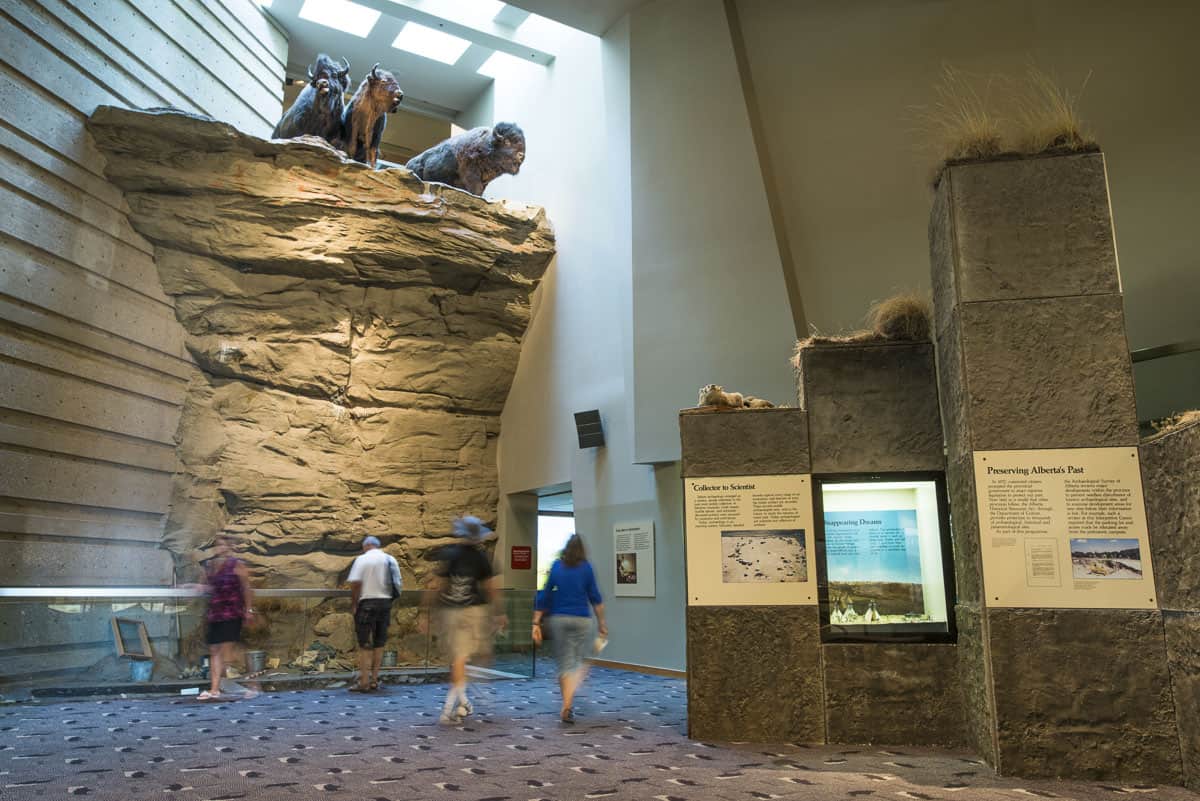
Even the lookout point at the top of the centre has a paved pathway that leads to the end with plenty of benches for rest breaks. The lookout has plenty of telescopes to allow visitors to take a closer look at the jump site or the breathtaking prairie landscape of the Porcupine Hills that surround the site.
Special Considerations for the 2025 Visitor Season
No cafeteria – Although there is an on-site cafeteria at Head-Smashed-In Buffalo Jump, it is currently closed. Ensure to pack your own picnic lunch, snacks, and plenty of water especially if you are planning to do some outdoor exploring.
Capacity restrictions – Head-Smashed-In Buffalo Jump is a popular tour bus and field trip stop and since the majority of experience lies within the interpretive centre, it can get very busy in the summer months. Be aware that there might be a wait to get in, especially at peak times (typically 11 am – 2 pm daily). We recommend planning your visit accordingly: 10 am – 11 am or 2 pm – 5 pm would be good times to visit in order to avoid intense crowds.
No tour guides – The hike to the drive lanes typically includes a guided interpretation. However, that will not be available in the 2025 season. Therefore, the popular “Hike To The Drive Lanes” program will not be available this season. The only self-guided hiking available is the Upper Trail and Viewpoint, and a walk along the self-guided Lower Trail. Additionally, the interpretive centre will be self-guided, and, there are plenty of interactive displays to make the most of the experience.
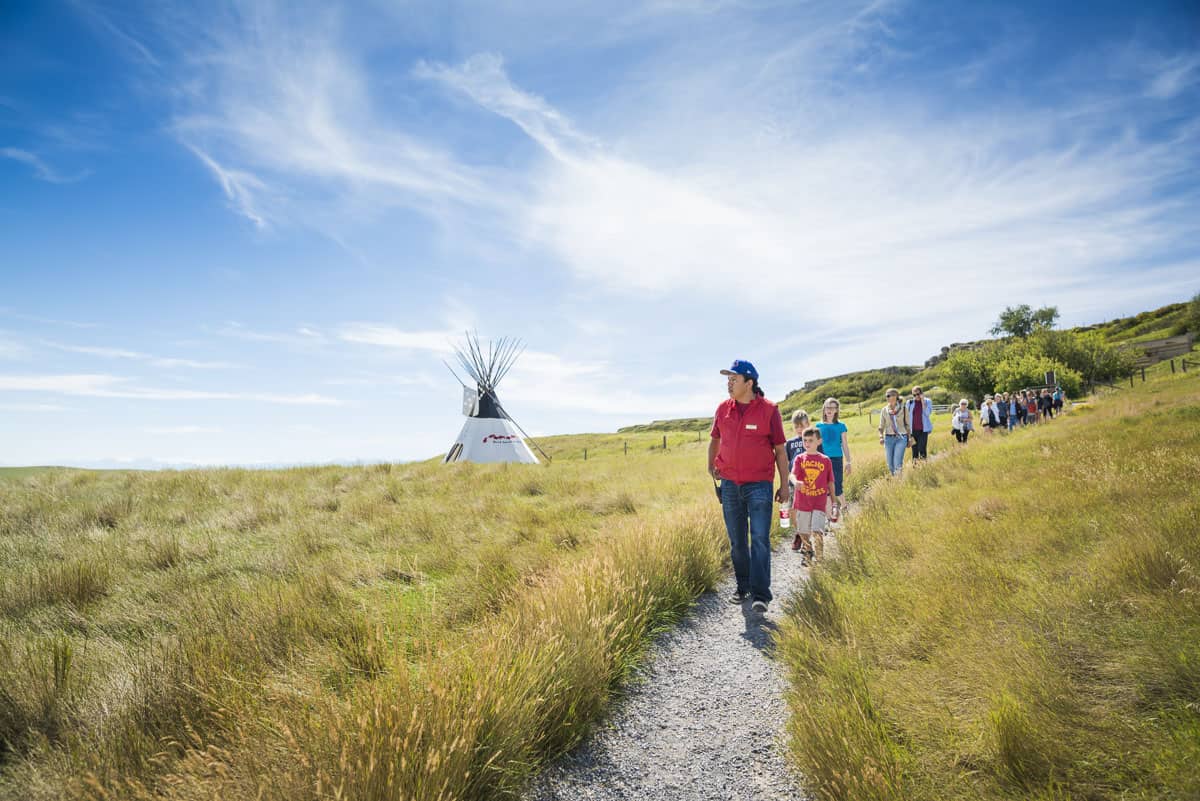
No assistance to get up the hill from the parking lot – Although the site itself is very wheelchair friendly, it is important to note that the centre is perched on the hillside with the parking lot at the bottom. It is paved, but it is a (relatively short) climb to get from your vehicle to the interpretive centre. It is also in the middle of the prairie landscape, so there is no shade, and temperatures routinely get above 30ºC in the sun. If travelling with someone who may have difficulty with a steep walk up and down the hill, we recommend dropping them off at the centre before parking the vehicle.
Don’t Miss Visiting This Important Archaeological Site
Right off the main highway, Head-Smashed-In Buffalo Jump is an easy add-on to a trip between Calgary and Lethbridge! Full of culture and history from a unique perspective, this UNESCO World Heritage Site is a stop worthy of a couple of hours that will delight travellers of all ages.
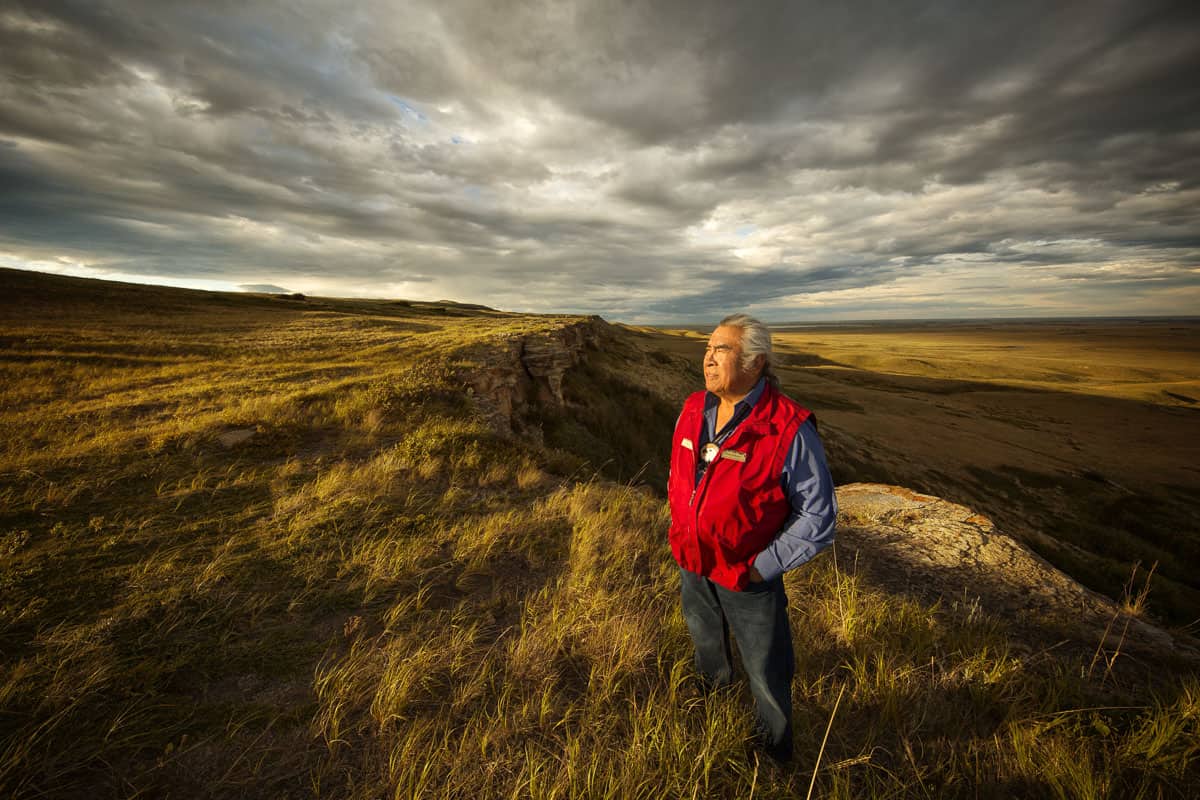
For another facet of Alberta history, we highly recommend also stopping in at the Fort Museum of the North-West Mounted Police in Fort Macleod. Or spend some time in the region and plan to visit another World Heritage Site to check off your bucket list (there are three others in southern Alberta!).
Looking for more to do in the area? Review this guide for a 2-3 day southwest Alberta road trip for ideas. And this guide of things to do in Fort Macleod.
And don’t forget to download our FREE Road Trip Alberta bingo cards to have in your car for any road trip!

Dalene Heck is a co-founder of Road Trip Alberta. She was born in Edmonton, grew up in the Peace Country, and has ventured to almost every corner of Alberta and the world (she’s travelled to 60 countries)! She is a serial blogger, the CEO of HMI Marketing, co-creator of the Trip Chaser card game, a leukemia-slayer, and cat whisperer.

